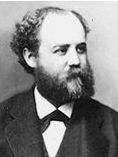If the students or the physicians comprehend the general qualities of a drug, they are prepared to apply its particulars. Given, for instance, a special symptoms: sleepy, but cannot sleep Bell, Apis, if the general properties of these two remedies are known, the choice is easy.
Still, it must be remembered that it is only by the multiplication of particulars that the general character can be distinctively drawn, just as a strange object becomes more and more familiar and separable from its similars as we recognize more the relation of its parts to the whole.
Recognizing that the totality is to be employed rather than single symptoms, some teachers have neglected the latter, and have published descriptions of drugs, sewn out after the fashion of their own synthetic thought. This error arises from a misunderstanding of the procedures of the so-called symptomists.
Few, if any, prescribe for one symptom; for, although such a single indication may lead them to a drug, their knowledge of the drug as a whole immediately comes into consciousness, and they intuitively fit the fact into its proper place.
Now, because this understanding of the whole was acquired by a long and patient attention to details, to characteristics, they really have a more accurate mental picture than most of their accusers.
A correct generalization of a drug then, can only be made after a full and complete analysis of its particulars. The mental impress formed by a reconstruction of these particulars is the true general.
Always afterwards in prescribing, when a single characteristic presents itself, it is to be measured by its relation to the whole. This is the true value of Hahnemann’s “totality”.


